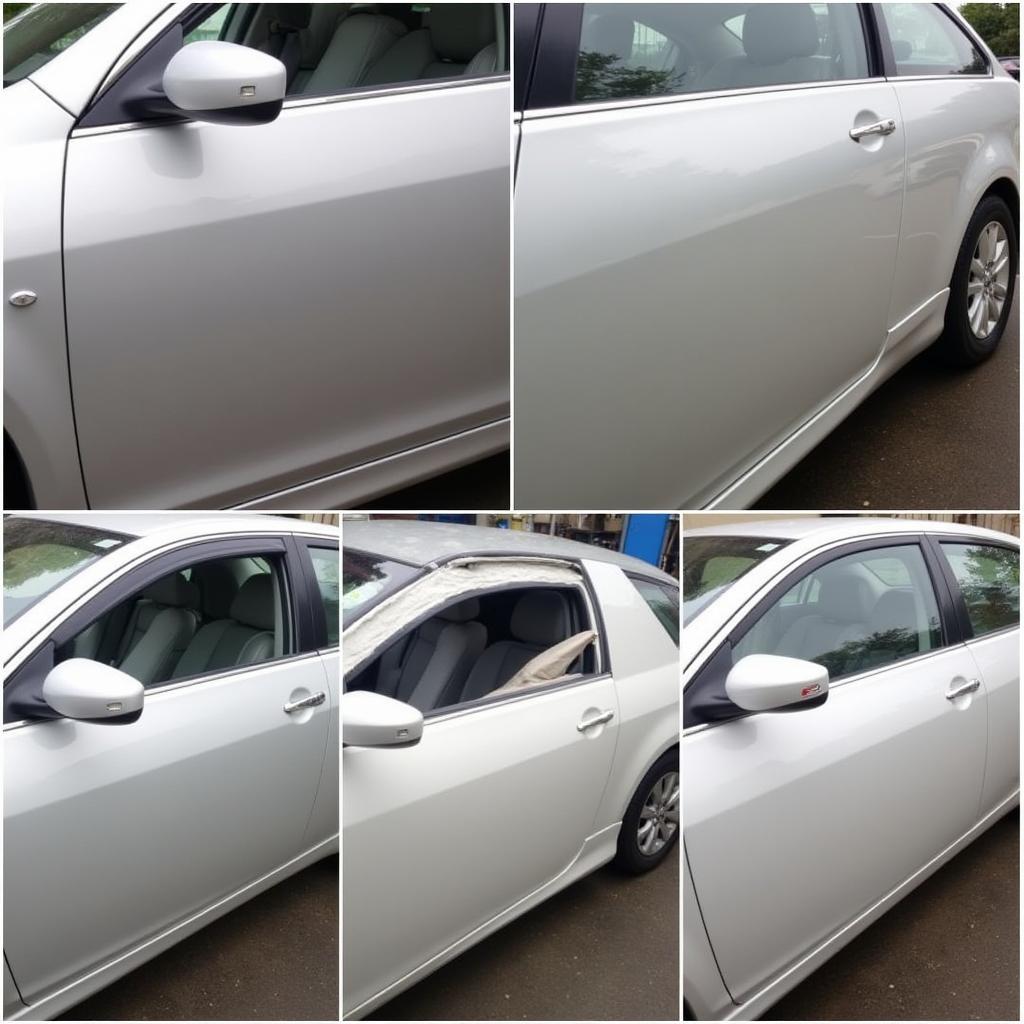Keying a car is a frustrating and costly experience. It’s an act of vandalism that can leave your once beautiful car looking like a mess. But don’t worry, fixing keyed car paint is possible and doesn’t have to break the bank. In this comprehensive guide, we’ll walk you through the steps of fixing keyed car paint, from assessing the damage to getting the perfect finish.
Assessing the Damage: How Deep Are the Scratches?
The first step to fixing keyed car paint is determining the severity of the damage. This will help you decide what repair method is best for your situation. Here are the main types of scratches:
- Surface Scratches: These scratches only affect the clear coat, the outermost layer of paint. They are typically shallow and visible as fine lines.
- Deep Scratches: These scratches go beyond the clear coat and into the color coat, revealing the primer underneath. They appear as deeper lines and might even expose bare metal.
How to Tell If the Scratch Is Deep?
To check for a deep scratch, try running your fingernail across the damaged area. If it catches, it’s likely a deep scratch. You can also use a toothpick to gently probe the scratch. If you can see the primer or bare metal, it’s definitely a deep scratch.
Repair Options: From DIY to Professional Solutions
Once you’ve assessed the damage, you can decide on the appropriate repair method. Here are the most common options:
1. DIY Solutions for Surface Scratches:
- Polishing: Polishing can remove fine scratches and imperfections in the clear coat. Use a high-quality polishing compound and a buffer or microfiber cloth.
- Touch-Up Paint: For small surface scratches, applying touch-up paint can help blend the scratch and make it less noticeable. Use a paint pen or small brush and let the paint dry completely before polishing.
2. Professional Solutions for Deep Scratches:
- Paintless Dent Repair (PDR): PDR is a technique that uses specialized tools to push the dent from the inside out, restoring the original shape of the panel. It’s a great option for small dents and scratches.
- Body Shop Repair: For deep scratches that expose the primer or bare metal, a body shop repair is often necessary. This involves sanding, priming, and repainting the damaged area.
Step-by-Step Guide to DIY Surface Scratch Repair
If you’re dealing with surface scratches, you can try fixing them yourself. Here’s a step-by-step guide:
1. Prepare the Area:
- Clean the scratched area with a car wash soap and water.
- Dry the area thoroughly with a microfiber cloth.
2. Apply Polishing Compound:
- Choose a high-quality polishing compound specifically designed for car paint.
- Apply a small amount of compound to a clean microfiber cloth.
- Work the compound into the scratched area in a circular motion.
- Use light pressure and avoid pressing too hard.
3. Polish and Buff:
- Continue polishing until the scratch is less visible or completely removed.
- Use a clean microfiber cloth to buff out the compound and remove any haze.
4. Apply Wax (Optional):
- Applying wax can protect the paint and enhance its shine.
- Choose a car wax specifically designed for your car’s paint type.
- Apply a thin layer of wax to the entire car, including the repaired area.
- Let the wax dry and then buff it out.
Expert Insight:
“It’s important to use the right tools and techniques for your repair,” says Dr. Emily Carter, a renowned automotive expert. “Always start with a gentle approach, and if you’re not confident about your skills, it’s best to consult with a professional.”
Frequently Asked Questions
Q: What’s the best way to prevent keying?
A: While you can’t completely prevent keying, there are ways to make your car less attractive to vandals. Park in well-lit areas, use a car cover, and consider installing a security system.
Q: How much does it cost to fix keyed car paint?
A: The cost of repairing keyed car paint can vary depending on the severity of the damage, the repair method, and the location. DIY solutions are typically the most affordable, while professional repairs can cost several hundred dollars.
Q: Can I use household products like toothpaste to fix scratches?
A: While toothpaste can sometimes remove minor scratches, it’s not a recommended solution for car paint. Toothpaste contains abrasive particles that can further damage the paint.
Q: How long will it take to fix keyed car paint?
A: The time it takes to fix keyed car paint depends on the repair method and the severity of the damage. DIY solutions can take a few hours, while professional repairs may take several days.
Conclusion:
Keying a car is a frustrating experience, but it doesn’t have to be a total disaster. By following these steps and choosing the right repair method, you can fix keyed car paint and restore your vehicle’s shine. Remember, if you’re unsure about your skills or the severity of the damage, it’s always best to consult with a professional.
We at AutoTipPro are dedicated to providing expert advice and solutions for all your automotive needs. Contact us today at +1 (641) 206-8880 or visit us at 500 N St Mary’s St, San Antonio, TX 78205, United States.





Leave a Reply